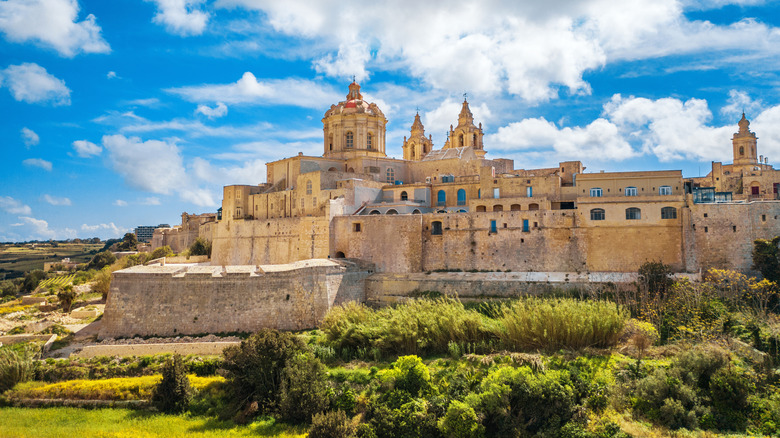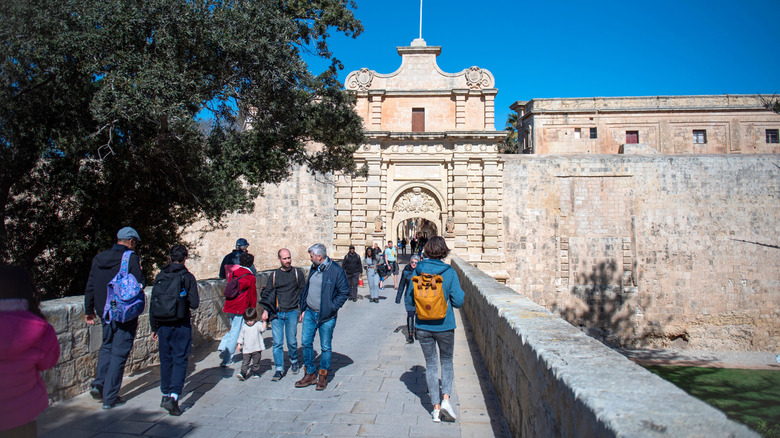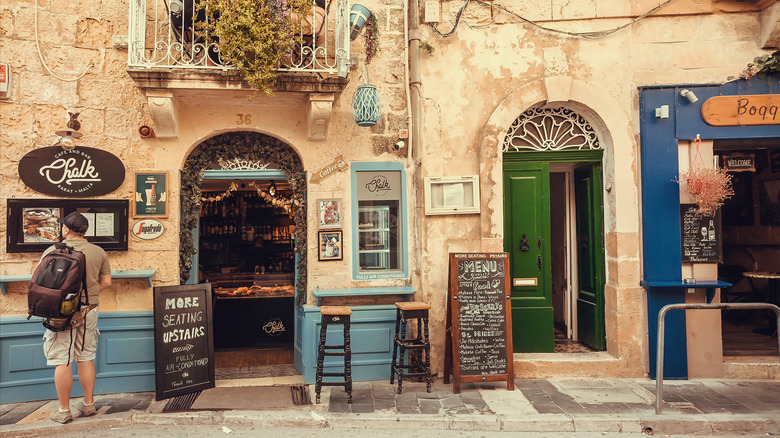Composed of five islands between Sicily and Tunisia, Malta’s strategic location has made it a coveted prize for centuries. With Neolithic temples, Phoenician and Roman ruins, and remarkably well-preserved medieval cities, Malta is the perfect Mediterranean island for a historic vacation. It has three UNESCO World Heritage sites, including the capital, Valletta. The crown jewel of Malta’s historic sites, however, is the walled medieval city of Mdina.
Once Malta’s capital, this majestic fortified city was the seat of power on the island under the command of the Knights of St. John. From here, the Knights fended off the mighty Ottoman Empire in a navy battle known as the Great Siege of Malta. After their victory, the Knights of St. John decided to build a much larger capital in Valletta, abandoning Mdina so quickly that it was nicknamed “the silent city” for its eerie empty streets. Today, Mdina is prized for its quiet streets, with few residents and virtually no traffic on its stone streets.
To visit, you can fly into Malta’s International Airport just 20 minutes from the city by car or bus. Alternatively, you could take a ferry from Sicily. Boats depart every day from Pozzallo and drop passengers right in Valletta’s harbour after about 1 hour and 45 minutes at sea. From Valletta, you can rent a car or take the bus to Mdina. Note that if you take a car, you’ll have to park outside the city walls. Buses leave every 10 minutes, and the ride is under 30 minutes.
What to see and do in Mdina
Most visitors enter Mdina through the Vilhena Gate, a majestic Baroque design that crosses over a classic castle moat, now a garden. If it looks familiar, you might remember it as the entry to King’s Landing in “Game of Thrones.” St. Paul’s Cathedral dominates Mdina’s skyline and is the most important heritage site in the city, believed to be where Saint Paul converted Publius, Malta’s Roman Governor to Christianity. The structure was built in the early 18th century to replace the previous Cathedral, irreparably damaged in an earthquake. Many of the Cathedral’s artifacts and archives can be seen next door at the Mdina Metropolitan Cathedral Museum. For a more intimate look at religious life in Mdina, the Carmelite Priory welcomes visitors to see their refectory, kitchens, and even a typical friar’s room.
The Palazzo Falson offers an immersive experience into the family lives of Mdina’s nobility. This 13th-century building evolved over the centuries, from a single-story house for noblemen to a grand two-story palace that was owned by a wealthy Swedish trader in the 20th century. Visitors can see how the medieval architecture has been painstakingly restored as well as the fine furnishings of the last owners.




